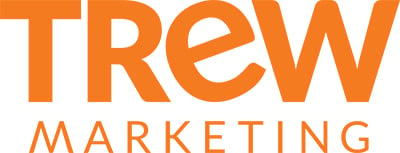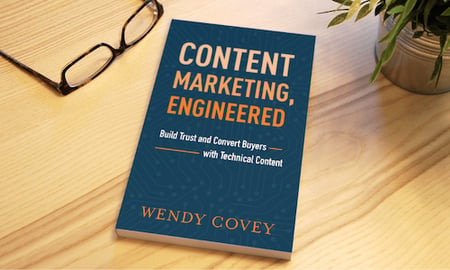Until recently, we’ve been living in this wonderful marketing world of SEO magic, where you carefully tend to one primary marketing channel (your website), create a regular stream of content, and voila! A handful of your blogs start ranking in search and thousands upon thousands of visitors pour into your site – yours to nurture, engage, and convert.
But if your business is like most, you’ve likely seen a significant dip in organic traffic over the last year and a half. Google algorithm shifts, changes in search behavior, AI-assisted search, and generative AI platforms are changing the game. The single-channel approach isn’t cutting it anymore.
When it comes to being seen by your target audiences, the importance of domain authority (the credibility of your website) is being replaced by the importance of brand authority (the credibility of your brand across all digital spaces). And these audiences are no longer just going to Google to gather information. So, we’re back to meeting prospects where they are – trade publications, podcasts, social media, virtual events, live events, etc. In other words: a multichannel marketing approach.

Laying the Foundation
Long before you start thinking about what channels to employ, you of course need to deeply understand your business priorities, the areas in which marketing can impact, your company value proposition and differentiation, and your target audience’s needs, motivations, and frustrations. These pieces inform your marketing goals and the tactics you’ll execute to reach them. As we like to say, strategy before tactics.

Once you have identified your marketing priorities, built out your persona profiles, established your brand positioning and messaging, and identified your content themes and topics, you’re ready to map out just how you’re going to get the word out through owned, earned, and paid media channels. Let’s take a look at each of these categories.
the Multichannel Marketing Trifecta

Owned Media: Your Home Base
Owned media represents the channels a business has complete control over. This media type serves as the foundational bedrock of your digital presence, offering a home base where prospects can learn about your offerings, values, and industry insights.
Media Examples:
- Company Website
- Blog
- Email Lists
Key Advantages:
- Control: You dictate the content, design, and user experience, tailoring your messaging to resonate deeply with your target audience.
- SEO Benefits: High-quality, consistent content can significantly improve your search engine ranking, driving organic traffic to your site.
- Cost-Effectiveness: Beyond initial set-up and ongoing maintenance, owned media can provide a cost-effective platform for content distribution.
To maximize the impact of owned media, focus on creating valuable, relevant content that addresses the needs and questions of your target audience. Engage with visitors through interactive elements and use analytics to refine your strategy continuously.
Earned Media: The Credibility Boost
Earned media is arguably the most credible form of marketing, encompassing word-of-mouth, customer reviews, media coverage, and social media mentions. It’s the natural outcome of having a product, service, or content that others find valuable enough to share or endorse without any direct payment or prompting from you.
Media Examples:
- Social Mentions
- Customer Reviews
- Articles from Industry Influencers
Key Advantages:
- Trust and Credibility: Earned media acts as a third-party endorsement, which can significantly boost your brand’s credibility and trustworthiness.
- Extended Reach: Positive mentions and shares can exponentially increase your content’s reach beyond your immediate network.
- Cost-Efficiency: Aside from the effort to create share-worthy content or experiences, earned media does not directly cost anything.
Encourage earned media by engaging with your audience, providing exceptional customer service, and creating shareable content. Monitoring social mentions and industry conversations can also help you capitalize on opportunities to amplify positive feedback.
Paid Media: The Targeted Push
Paid media covers all marketing channels you pay for, such as pay-per-click advertising and sponsored content. This media type can accelerate your marketing efforts, offering targeted visibility and quick results.
Media Examples:
- LinkedIn Ads
- Google Ads
- PPC Advertising
- Industry Publications
Key Advantages:
- Precision Targeting: paid media platforms offer sophisticated targeting options, allowing you to reach specific demographics, industries, or even individual companies.
- Scalability: You can adjust your spending based on performance, scaling up successful campaigns for greater impact.
- Measurable ROI: Digital advertising platforms provide detailed analytics, enabling you to measure your return on investment and make data-driven decisions.
To effectively integrate paid media into your multi-channel strategy, start with clear objectives and a defined target audience. Test different platforms and ad formats to determine what works best for your business, and always align your paid efforts with your organic and earned media strategies.
Engaging Technical Buyers Across Channels for Maximum Impact
The real magic happens when owned, earned, and bought media work together, creating a synergistic effect that amplifies your marketing impact.
Say you publish a compelling blog article on your website (owned media). Then, a well-respected industry publication picks it up and shares it with their audience (earned media). Seeing how well-received this piece has become, you amplify that content through targeted social media ads or a sponsored newsletter (paid media), extending its reach even further. This synergy creates a powerful wave that drives brand awareness, engagement, and ultimately, sales.

Here's how to leverage each media type:
-
Owned Media:
-
Create high-quality content that educates, entertains, and solves problems for your target audience.
-
Build an email list and nurture leads with targeted email campaigns.
-
Utilize social media to engage with your audience, share industry insights, and showcase your company culture.
-
-
Earned Media:
-
Identify key industry influencers and build relationships with them.
-
Create shareable content that resonates with journalists and publications.
-
Participate in industry events and conferences to build brand awareness.
-
-
Paid Media:
-
Utilize targeted advertising to reach your ideal customers on relevant platforms.
-
Experiment with different ad formats – video, display, and social media ads – to see what resonates best.
-
Track your results and optimize your campaigns for maximum reach and engagement.
-
The Key to Success
A multichannel approach isn't just about throwing content at different walls and hoping something sticks. It's about creating a cohesive strategy where each piece complements the others. Here are some tips:
- Maintain a consistent brand voice and message across all channels. In this age of AI-generated content, people crave a unique perspective and want to hear from humans.
- Focus on building relationships – with your audience, influencers, and media outlets.
- Use data and analytics to track your progress and optimize your campaigns.
- Adjust and optimize your strategy based on performance data and feedback from your audience.
Embracing a multichannel approach in your B2B marketing strategy, with a balanced mix of owned, earned, and bought media, can significantly enhance your brand's visibility, credibility, and customer engagement. By strategically integrating these media types, you can build a robust marketing program that drives awareness, engagement, and growth for your business.
TREW is a marketing agency dedicated to reaching engineering and technical audiences through a range of marketing initiatives. Contact us today to learn more about the services we offer.
SUBSCRIBE TO OUR BLOG FOR THE LATEST UPDATES
Jennifer Dawkins
 Jennifer has been successfully marketing to engineers and scientists for nearly 20 years. Her marketing experience spans from defining company narratives and developing integrated marketing campaigns to building mutually beneficial partner relationships and maximizing performance in cross-functional teams. Jennifer holds a Bachelor of Journalism degree from the University of Texas at Austin. She is a native Austinite and when not at work, enjoys being on the lake or cheering on her sons’ soccer teams.
Jennifer has been successfully marketing to engineers and scientists for nearly 20 years. Her marketing experience spans from defining company narratives and developing integrated marketing campaigns to building mutually beneficial partner relationships and maximizing performance in cross-functional teams. Jennifer holds a Bachelor of Journalism degree from the University of Texas at Austin. She is a native Austinite and when not at work, enjoys being on the lake or cheering on her sons’ soccer teams.
About TREW Marketing
TREW Marketing is a strategy-first content marketing agency serving B2B companies that target highly technical buyers. With deep experience in the design, embedded, measurement and automation, and software industries, TREW Marketing provides branding, marketing strategy, content development, and digital marketing services to help customers efficiently and effectively achieve business goals.






 Jennifer Dawkins
Jennifer Dawkins
